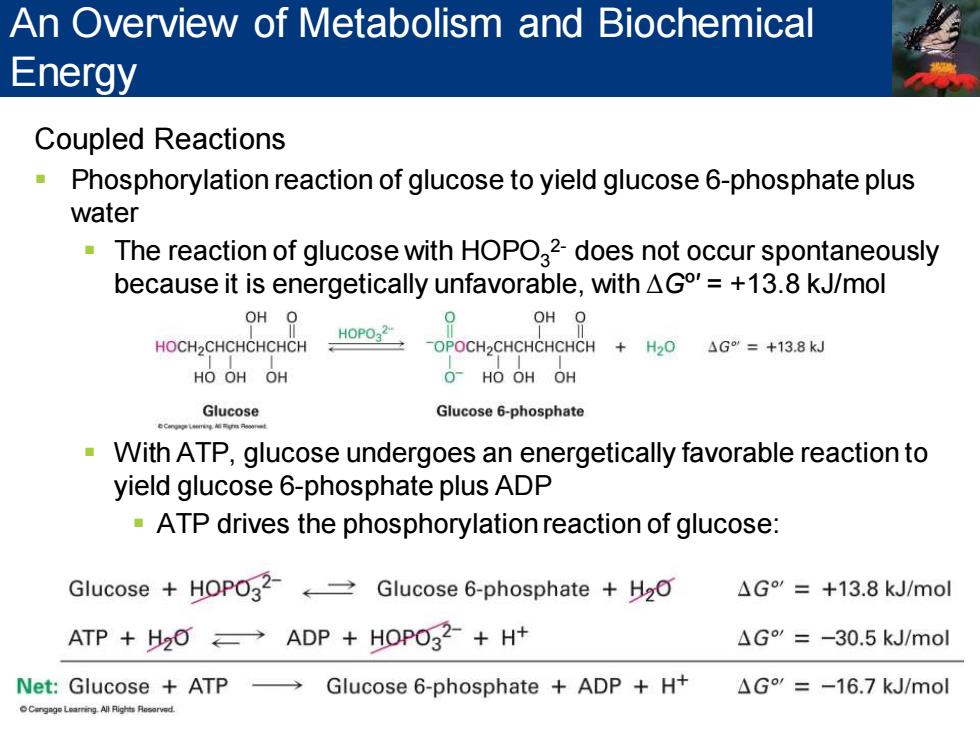
An Overview of Metabolism and Biochemical Energy Coupled Reactions Phosphorylation reaction of glucose to yield glucose 6-phosphate plus water The reaction of glucose with HOPO 2-does not occur spontaneously because it is energetically unfavorable,with AGo'=+13.8 kJ/mol OH O HOCH2CHCHCHCHCH HOPO OH O :-OPOCH2CHCHCHCHCH H2O AG=+13.8 kJ HO OH OH O-HO OHOH Glucose Glucose 6-phosphate With ATP,glucose undergoes an energetically favorable reaction to yield glucose 6-phosphate plus ADP =ATP drives the phosphorylation reaction of glucose: Glucose HOPO32-Glucose 6-phosphate H2O △G=+13.8kJ/mol ATP H2 ADP HOPO32-+H+ △G'=-30.5kJ/mol Net:Glucose ATP → Glucose 6-phosphate ADP +H+ △G=-16.7kJ/mol ngg Learing All Rights Resarved
Coupled Reactions ▪ Phosphorylation reaction of glucose to yield glucose 6-phosphate plus water ▪ The reaction of glucose with HOPO3 2- does not occur spontaneously because it is energetically unfavorable, with ∆Gº′ = +13.8 kJ/mol ▪ With ATP, glucose undergoes an energetically favorable reaction to yield glucose 6-phosphate plus ADP ▪ ATP drives the phosphorylation reaction of glucose: An Overview of Metabolism and Biochemical Energy
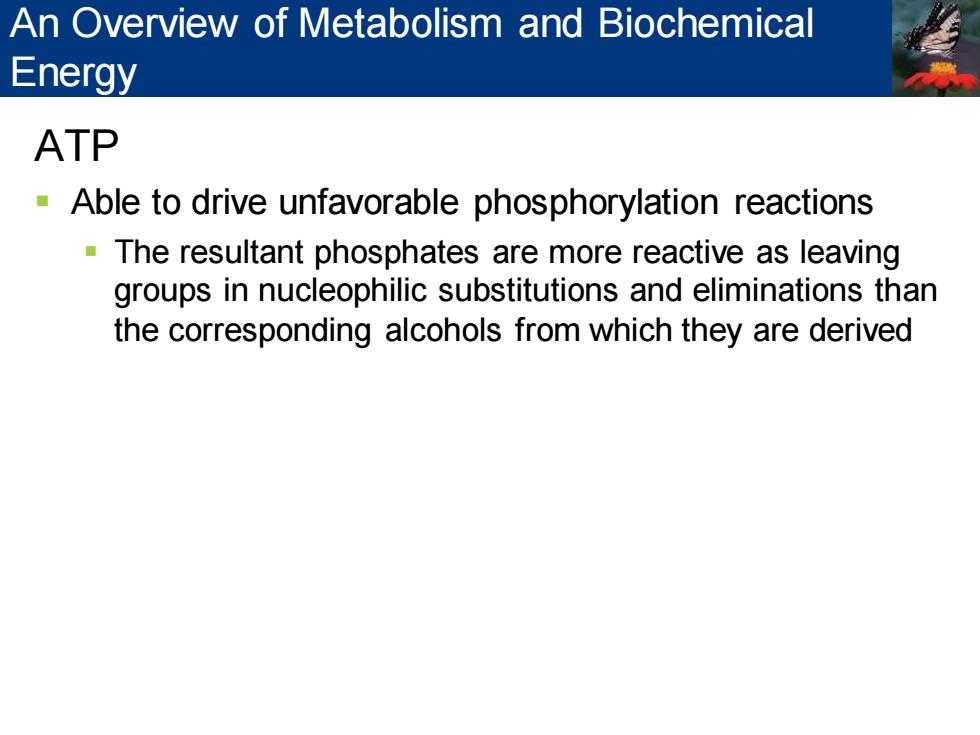
An Overview of Metabolism and Biochemical Energy ATP -Able to drive unfavorable phosphorylation reactions -The resultant phosphates are more reactive as leaving groups in nucleophilic substitutions and eliminations than the corresponding alcohols from which they are derived
ATP ▪ Able to drive unfavorable phosphorylation reactions ▪ The resultant phosphates are more reactive as leaving groups in nucleophilic substitutions and eliminations than the corresponding alcohols from which they are derived An Overview of Metabolism and Biochemical Energy
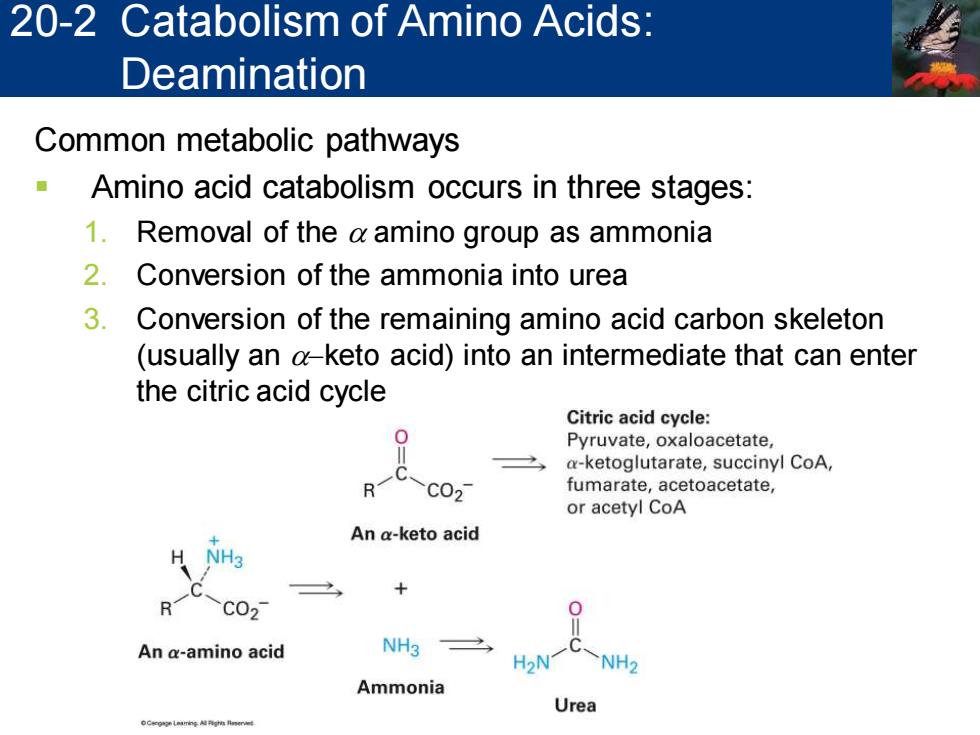
20-2 Catabolism of Amino Acids: Deamination Common metabolic pathways Amino acid catabolism occurs in three stages: 1.Removal of the a amino group as ammonia 2.Conversion of the ammonia into urea 3.Conversion of the remaining amino acid carbon skeleton (usually an a-keto acid)into an intermediate that can enter the citric acid cycle Citric acid cycle: Pyruvate,oxaloacetate, a-ketoglutarate,succinyl CoA, c02 fumarate,acetoacetate, or acetyl CoA An a-keto acid H NH3 + R C02 An a-amino acid NH3 H2N NH2 Ammonia Urea
Common metabolic pathways ▪ Amino acid catabolism occurs in three stages: 1. Removal of the a amino group as ammonia 2. Conversion of the ammonia into urea 3. Conversion of the remaining amino acid carbon skeleton (usually an a-keto acid) into an intermediate that can enter the citric acid cycle 20-2 Catabolism of Amino Acids: Deamination
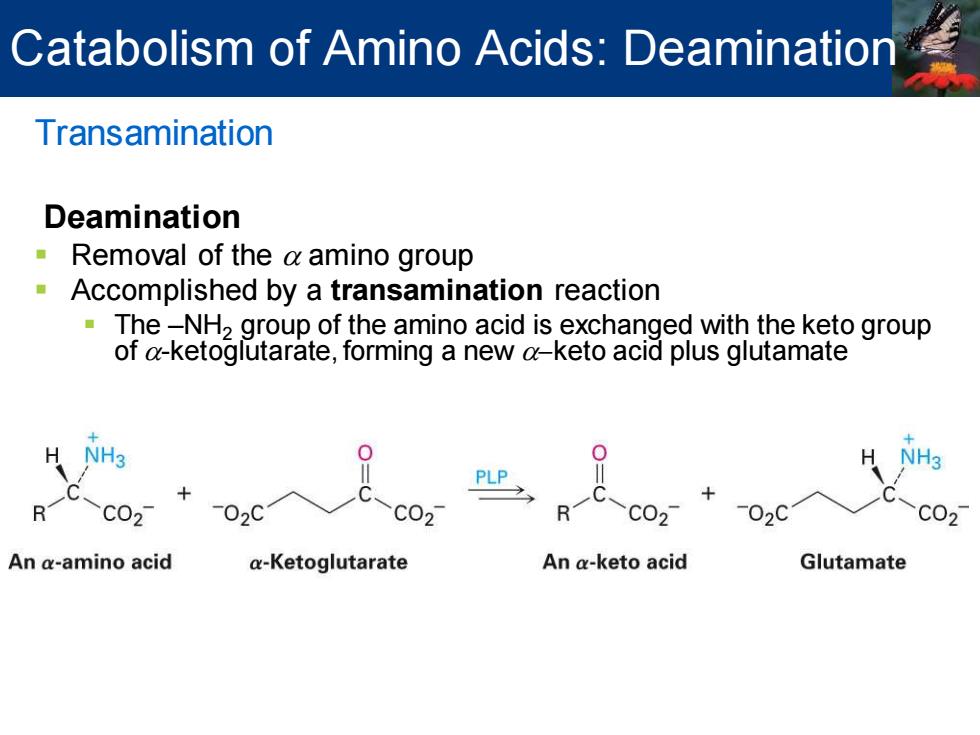
Catabolism of Amino Acids:Deamination Transamination Deamination Removal of the a amino group Accomplished by a transamination reaction The-NH2 group of the amino acid is exchanged with the keto group of a-ketoglutarate,forming a new a-keto acid plus glutamate H NH3 PLP -02C -02C C02 An a-amino acid a-Ketoglutarate An a-keto acid Glutamate
Transamination Deamination ▪ Removal of the a amino group ▪ Accomplished by a transamination reaction ▪ The –NH2 group of the amino acid is exchanged with the keto group of a-ketoglutarate, forming a new a-keto acid plus glutamate Catabolism of Amino Acids: Deamination
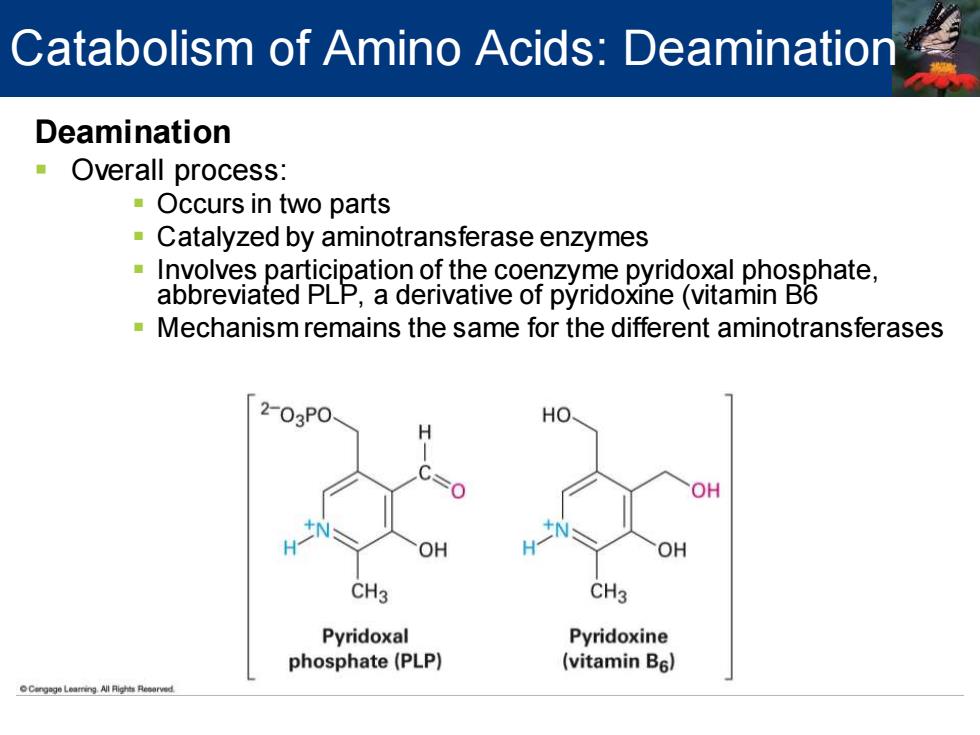
Catabolism of Amino Acids:Deamination Deamination Overall process: Occurs in two parts Catalyzed by aminotransferase enzymes Involves participation of the coenzyme pyridoxal phosphate, abbreviated PLP,a derivative of pyridoxine(vitamin B6 Mechanism remains the same for the different aminotransferases 203P0 HO OH OH OH CH3 CH3 Pyridoxal Pyridoxine phosphate(PLP) (vitamin B6】 ●nggLeaming A月ighs Reoorved
Deamination ▪ Overall process: ▪ Occurs in two parts ▪ Catalyzed by aminotransferase enzymes ▪ Involves participation of the coenzyme pyridoxal phosphate, abbreviated PLP, a derivative of pyridoxine (vitamin B6 ▪ Mechanism remains the same for the different aminotransferases Catabolism of Amino Acids: Deamination